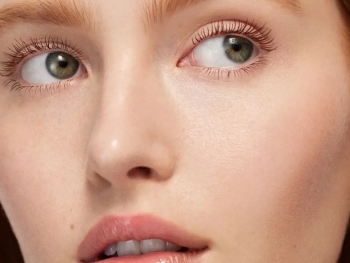In the digital age, mobile advertising has emerged as a game-changer for businesses across industries, including the aesthetic sector. With the rapid proliferation of smartphones and mobile internet usage, leveraging mobile advertising can significantly enhance your aesthetic practice's visibility, engage potential clients, and drive business growth. This comprehensive guide explores how mobile advertising can transform your aesthetic practice's reach, offering insights into strategies, best practices, and tools for success.
The Rise of Mobile Advertising
Mobile advertising refers to the use of mobile devices—smartphones and tablets—to deliver targeted ads to users. With the majority of internet traffic now coming from mobile devices, mobile advertising has become an essential component of digital marketing strategies.
Key Statistics Highlighting the Importance of Mobile Advertising
- Mobile Device Usage: As of 2024, mobile devices account for over 60% of all global internet traffic (Source: Statista).
- Ad Spend Growth: Mobile advertising spending is projected to surpass $400 billion in 2024, reflecting its growing importance in digital marketing (Source: eMarketer).
- User Engagement: Mobile users are more likely to engage with ads and make purchases through their devices compared to desktop users (Source: Google).
These statistics underscore the need for aesthetic practices to incorporate mobile advertising into their marketing strategies to stay competitive and effectively reach their target audience.
Benefits of Mobile Advertising for Aesthetic Practices
1. Enhanced Targeting and Personalization
Mobile advertising offers advanced targeting options that allow you to reach your ideal clients with precision. By leveraging data such as user location, behavior, and interests, you can create highly personalized ad campaigns that resonate with potential clients.
Targeting Options:
- Geotargeting: Deliver ads based on the user’s geographic location, such as targeting individuals within a specific radius of your clinic.
- Behavioral Targeting: Reach users based on their browsing history, app usage, and search queries related to aesthetic procedures.
- Demographic Targeting: Target ads based on user demographics such as age, gender, and income level.
Example: If you specialize in facial rejuvenation treatments, you can use geotargeting to display ads to users within your city who have shown interest in skincare and beauty.
2. Increased Visibility and Reach
Mobile advertising enables your aesthetic practice to achieve greater visibility and reach a broader audience. With the majority of users accessing the internet via mobile devices, advertising on these platforms ensures that your ads are seen by a large and relevant audience.
Ad Formats for Increased Visibility:
- Mobile Display Ads: Visual ads that appear on mobile apps and websites.
- Native Ads: Ads that blend seamlessly with the content of mobile apps or websites, providing a less intrusive user experience.
- In-App Ads: Ads displayed within mobile applications, targeting users while they engage with their favorite apps.
Example: Utilize mobile display ads to promote special offers or new treatments to users browsing beauty-related content on their smartphones.
3. Improved User Engagement
Mobile ads often lead to higher engagement rates compared to traditional desktop ads. Mobile devices facilitate instant access to information and actions, making it easier for users to interact with your ads and take desired actions.
Engagement Features:
- Click-to-Call: Allow users to call your clinic directly from the ad with a single click.
- Mobile-Friendly Landing Pages: Ensure that the landing pages users are directed to are optimized for mobile devices, providing a seamless experience.
- Interactive Ads: Incorporate interactive elements such as quizzes or polls to engage users and gather valuable information.
Example: Include a click-to-call feature in your ads, enabling users to schedule consultations or ask questions with a simple tap.
4. Cost-Effective Advertising
Mobile advertising can be more cost-effective than traditional advertising methods due to its precise targeting and ability to reach a highly relevant audience. You can optimize your ad spend by focusing on users who are most likely to convert.
Cost-Effective Strategies:
- Bidding Strategies: Use cost-per-click (CPC) or cost-per-impression (CPM) bidding strategies to control your advertising costs.
- Budget Allocation: Allocate your budget based on performance metrics and optimize campaigns to ensure efficient use of resources.
- Ad Scheduling: Schedule your ads to run during peak times when your target audience is most active.
Example: Set up a cost-per-click campaign with a daily budget limit to ensure you only pay for actual clicks on your ads, maximizing your return on investment.
Effective Strategies for Mobile Advertising
1. Develop Mobile-Optimized Content
Creating mobile-optimized content is crucial for ensuring a positive user experience and maximizing the effectiveness of your ads. Design ads and landing pages that are visually appealing and easy to navigate on mobile devices.
Content Tips:
- Responsive Design: Ensure that your ads and landing pages adapt to different screen sizes and orientations.
- Concise Messaging: Keep your ad copy short and to the point, focusing on key benefits and a clear call-to-action.
- High-Quality Visuals: Use high-resolution images and videos that look professional and engaging on mobile screens.
Example: Design a mobile-friendly landing page with a prominent booking form and clear instructions for users to schedule a consultation.
2. Leverage Local Search Ads
Local search ads are highly effective for targeting users who are searching for aesthetic services in their area. By optimizing your ads for local search queries, you can attract potential clients who are nearby and actively seeking your services.
Local Search Ad Tips:
- Include Location Information: Add your clinic’s address and phone number to your ads to make it easy for users to find and contact you.
- Use Local Keywords: Incorporate location-specific keywords such as “aesthetic clinic [City]” or “Botox treatments near me” into your ad copy.
- Enable Location Extensions: Use location extensions in Google Ads to display your address, phone number, and a map to users searching for local services.
Example: Run a local search ad campaign targeting users in your city who are searching for cosmetic procedures, highlighting your clinic’s proximity and contact details.
3. Utilize Geo-Fencing
Geo-fencing allows you to target users based on their physical location by creating virtual boundaries around specific areas. This technique enables you to reach users who are in close proximity to your clinic or have visited competitors.
Geo-Fencing Strategies:
- Competitor Locations: Set up geo-fences around competitor clinics to capture potential clients who are considering multiple options.
- Event-Based Targeting: Create geo-fences around local events or popular locations to attract users who may be interested in aesthetic services.
- Custom Audiences: Target users who have previously visited your clinic or interacted with your ads, encouraging them to return.
Example: Implement a geo-fencing campaign targeting users who are within a 5-mile radius of your clinic, offering special promotions to encourage them to visit.
4. Monitor and Analyze Performance
Regularly monitoring and analyzing the performance of your mobile advertising campaigns is essential for optimizing results and achieving your marketing goals. Use analytics tools to track key metrics and make data-driven decisions.
Performance Metrics:
- Click-Through Rate (CTR): Measure the percentage of users who click on your ads compared to the number of impressions.
- Conversion Rate: Track the percentage of clicks that result in desired actions, such as appointments or inquiries.
- Cost-Per-Click (CPC): Evaluate the average cost you pay for each click on your ads.
- Return on Ad Spend (ROAS): Calculate the revenue generated for every dollar spent on mobile advertising.
Optimization Techniques:
- A/B Testing: Test different ad variations, landing pages, and targeting options to determine what works best.
- Adjust Bids and Budget: Modify your bidding strategies and budget allocation based on performance data to maximize ROI.
- Refine Targeting: Continuously refine your targeting criteria to focus on high-performing segments and exclude underperforming ones.
Example: Use A/B testing to compare the effectiveness of different ad creatives and landing pages, optimizing your campaigns based on the results.
Best Practices for Mobile Advertising in the Aesthetic Industry
1. Highlight Unique Selling Points
Emphasize what sets your aesthetic practice apart from competitors, such as specialized treatments, expert staff, or unique offers. Clearly communicate your value proposition in your ads to attract potential clients.
2. Focus on User Experience
Ensure that your mobile ads and landing pages provide a seamless user experience. A positive experience encourages users to engage with your ads and take desired actions.
3. Stay Compliant with Regulations
Adhere to industry regulations and advertising guidelines when creating mobile ads. Avoid making exaggerated claims or providing misleading information about your services.
4. Leverage Reviews and Testimonials
Incorporate positive reviews and testimonials into your ads to build trust and credibility. Showcase satisfied clients’ experiences to enhance your practice’s reputation.
5. Continuously Adapt and Innovate
Keep up with trends and technological advancements in mobile advertising. Experiment with new ad formats, targeting options, and strategies to stay ahead of the competition and maximize your results.
Mobile advertising presents a powerful opportunity for aesthetic practices to expand their reach, engage with potential clients, and drive business growth. By leveraging advanced targeting options, creating mobile-optimized content, and utilizing strategies such as geo-fencing and local search ads, you can enhance your practice's visibility and attract more clients.
Implementing effective mobile advertising strategies requires a strategic approach, continuous monitoring, and a commitment to optimizing your campaigns. By following best practices and staying informed about industry trends, you can harness the full potential of mobile advertising to achieve your marketing goals and transform your aesthetic practice’s reach.


